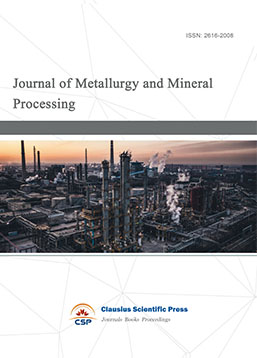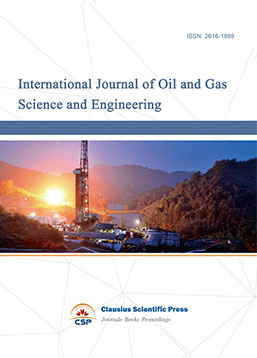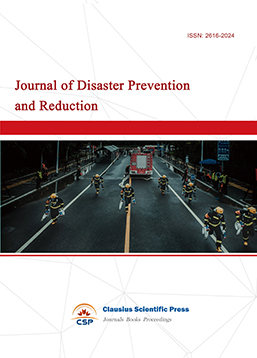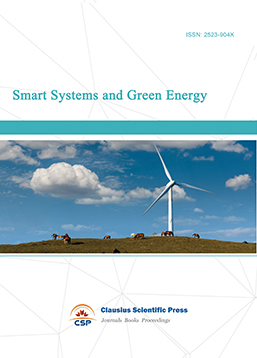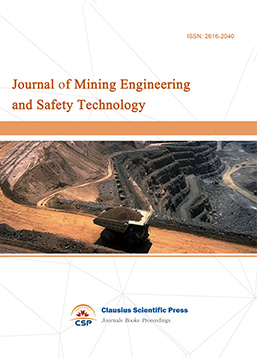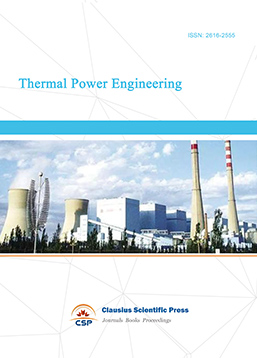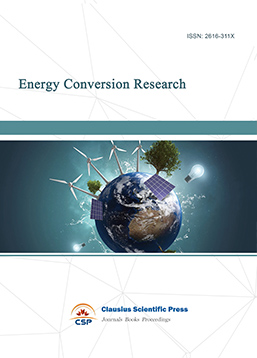Research Status and Prospect of Marine Geothermal Energy—Taking China's Ocean as an Example
DOI: 10.23977/fpes.2024.030102 | Downloads: 14 | Views: 1064
Author(s)
Jiangtao Tan 1, Jialong Yu 1
Affiliation(s)
1 Tibet University, Lhasa, Tibet, 850000, China
Corresponding Author
Jiangtao TanABSTRACT
As the largest part of the earth, the ocean is rich in energy resources. Marine geothermal energy, as a renewable and clean energy, has great potential and importance. However, the current research on marine geothermal energy is relatively lacking. The main geothermal research is still concentrated on land, and the potential of marine geothermal energy has not been fully explored. As one of the largest coastal countries in the world, China has many sea areas, including the East China Sea, the South China Sea, the Bohai Sea and the Yellow Sea. These sea areas not only have abundant biological resources, but also contain abundant marine geothermal energy resources. In these sea areas, geothermal resources such as submarine hot springs, hydrothermal channels and underground hot rocks are abundant and have great energy potential. This paper focuses on the research status of marine geothermal energy in the four major sea areas along the coast of China, systematically summarizes the geological survey and geothermal resources of the major sea areas, and looks forward to the future development trend. This paper discusses Marine geothermal resources, development technology, application field, sustainability and environmental protection, so as to arouse more people's attention and research on Marine geothermal energy.
KEYWORDS
Marine Geothermal Energy, China Ocean, Development TrendCITE THIS PAPER
Jiangtao Tan, Jialong Yu, Research Status and Prospect of Marine Geothermal Energy—Taking China's Ocean as an Example. Frontiers in Power and Energy Systems (2024) Vol. 3: 6-14. DOI: http://dx.doi.org/10.23977/fpes.2024.030102.
REFERENCES
[1] Cao Rui, Duo Ji, Li Yubin, etc. The occurrence characteristics, development status and prospect of medium-deep geothermal resources in China. Journal of Engineering Science, 2022, 44 (10): 1623-1631.DOI: 10.13374 / j.issn2095-9389.2022.04.07.003.
[2] Lin Wenjing, Liu Zhiming, Wang Wanli, etc. Geothermal Resources and Their Potential Assessment in China. China Geology, 2013, 40 (01): 312-321.
[3] Han Dong, Wang Ruoxuan. Characteristics and reserves evaluation of geothermal resources in Bohai Sea. Energy and energy conservation, 2023, (10): 67-70.DOI: 10.16643 / j.cnki.14-1360 / td.2023.10.01.
[4] Chen Moxiang, Huang Geshan, Wang Jian and so on. Preliminary study on the characteristics of geothermal field in Bohai Sea.Geology, 1984, (04): 392-401.
[5] Hu Shengbiao, Zhang Rongyan, Luo Yuhui, etc. Thermal history and oil and gas resource potential of Bohai Sea Basin.Oil and gas in China offshore. Geology, 2000, (05): 13-21.
[6] Gong Yuling, Wang Liangshu, Liu Shaowen and so on. The distribution characteristics of terrestrial heat flow in the Jiyang depression. China Science (Series D: Earth Science), 2003, (04): 384-391.
[7] Qiu Nansheng, Wei Gang, Li Cuicui, etc. Distribution Characteristics of Present Geothermal Field in Bohai Sea. Petroleum and Gas Geology, 2009, 30 (04): 412-419.
[8] Yang Shuchun, Hu Shengbiao, Cai Dongsheng, etc. Geothermal field characteristics and thermal-structural evolution of the southern basin of the South Yellow Sea.Scientific Report, 2003, (14): 1564-1569.
[9] Guo Xingwei, Sun Xudong, Yang Xiaoqiu and so on. A new terrestrial heat flow value in the central uplift of the South Yellow Sea: heat flow measurement results of Well CSDP-2.According to Geophysical Journal, 2023,66 (01): 332-343.
[10] Sun Xudong. Analysis of terrestrial heat flow, formation heat generation rate and thermal structure in the South Yellow Sea. China University of Geosciences (Beijing), 2020.DOI: 10.27493 / d.cnki.gzdzy.2020.00066.
[11] Guo Lingzhi, Shi Yangshen. The formation and evolution of Mesozoic and Cenozoic active continental margins and island arc structures in the Western Pacific. ACTA GEOLOGICA SINICA, 1983, (01): 11-21.DOI: 10.19762 / j.cnki.dizhixuebao.1983.01.002.
[12] Bi Chuanxue, Yang Ling, Wu Guohua, etc. Characteristics of heat flow in the East China Sea and its geological significance. Jiangsu Geology, 1994, (01): 30-36.
[13] Xu Weiling, Jiao Rongchang, Le Junying and so on. Geothermal studies on the continental shelf of the East China Sea.Progress in geophysics, 1995, (02): 32-38.
[14] Tong Zhigang, He Qing, He Shibin et al. Geothermal field and its effect on source rocks in Xihu Sag, East China Sea.Petroleum Experimental Geology, 2009,31 (05): 466-471 + 484.
[15] Yu Zhongkun, Zhao Hong, Diao Hui et al. Thermal evolution simulation and current geothermal field characteristics of Lishui Sag in the East China Sea Shelf Basin. Marine Geology and Quaternary Geology, 2020,40 (02): 124-134.DOI: 10.16562 / j.cnki.0256-1492.2019061402.
[16] He Lijuan, Xiong Liangping, Wang Jiyang. Geothermal Characteristics of the South China Sea Basin. Offshore Oil and Gas in China. Geology, 1998, (02): 15-18.
[17] Shi Xiaobin, Qiu Xuelin, Xia Kanyuan, etc. Characteristics of heat flow in the South China Sea and its tectonic significance. Journal of Tropical Oceanography, 2003, (02): 63-73.
[18] Yuan Yusong, Zheng Herong, Zhang Gongcheng, etc. Cenozoic thermal evolution history of the deep-water area in the northern South China Sea. Geology, 2009, 44 (03): 911-921.
[19] Zhang Jian, Wang Jiyang. Deep geothermal characteristics of the northern continental margin of the South China Sea.Scientific Report, 2000, (10): 1095-1100.
[20] Shan Jingfu, Zhang Gongcheng, Wu Jingfu, etc. Thermal structure and Moho temperature in Qiongdongnan Basin, northern margin of the South China Sea. Geophysical Journal, 2011, 54 (08): 2102-2109.
[21] Tang Xiaoyin, Zhong Chang, Yang Shuchun and so on. Characteristics of present geothermal field and its influencing factors in basins of China Sea and adjacent areas. Geological Journal, 2023,97 (03): 911-921.DOI: 10.19762 / j.cnki.dizhixuebao.2022087.
| Downloads: | 510 |
|---|---|
| Visits: | 36566 |
Sponsors, Associates, and Links

 Download as PDF
Download as PDF